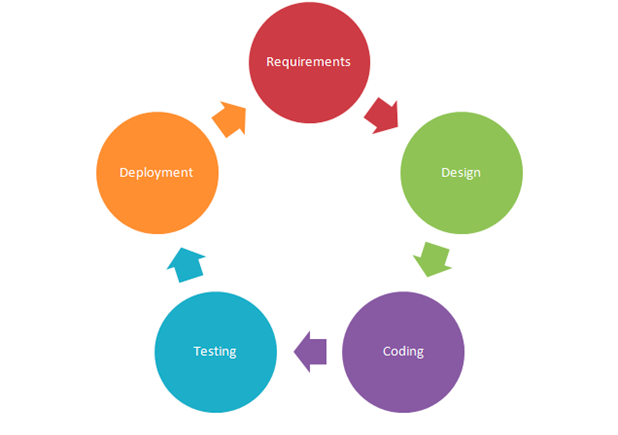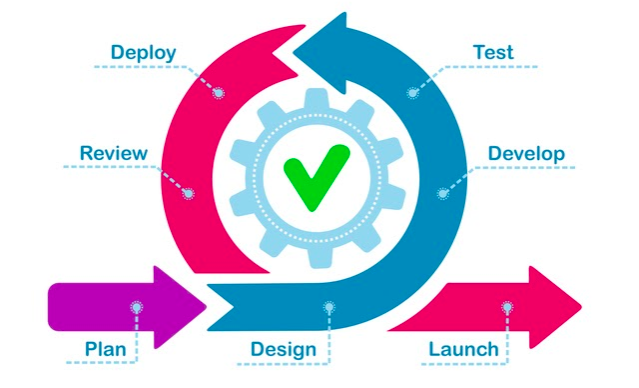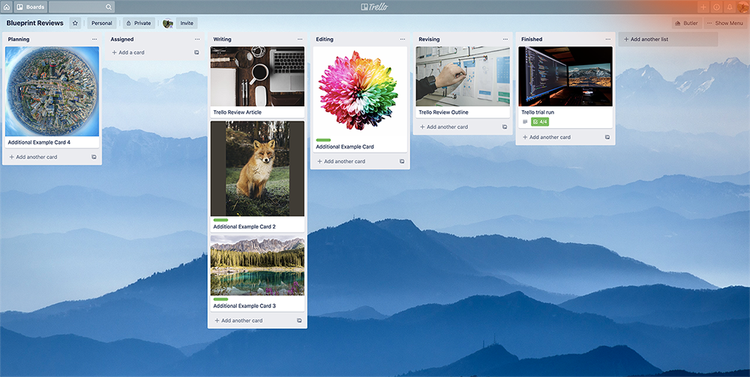The software development life cycle (SDLC) is an important framework for organizations delivering software products. Follow its principles and you can build the highest quality software for the lowest cost in the shortest time possible.
I’ve employed the SDLC process extensively in my career creating software products. It’s helped me launch a variety of software from multibillion-dollar global platforms used by major corporations to apps for small businesses.
You can apply the SDLC methodology to your software projects regardless of size or complexity. I’ll walk you through its advantages, phases, and the models you can adopt to implement it.
Overview: What is the software development life cycle (SDLC)?
At its core, the meaning of the SDLC is a repeatable process to achieve one goal: the effective creation of software products.
The process divides software development work into concrete phases performed in sequential order. Each step serves an important function.
These phases allow you to systematically take a software product from concept to a working product for those who’ll use the software, referred to as “end users.”
You marry the SDLC framework to a paradigm for execution, such as the popular scrum model. This allows your organization to align around the processes needed to create, deliver, and maintain software.
Let’s take a look at how SDLC adoption benefits your organization.

This graphic summarizes the SDLC phases. Image source: Author
4 benefits of following the software development life cycle (SDLC)
It’s tempting to shirk a process in favor of diving quickly into your project. But you’ll enjoy several benefits by adopting the best practices of the software development life cycle.
1. Faster development
SDLC’s set of standard processes and deliverables allows your team to work faster. Everyone’s aligned on what to do. It’s a natural project communication plan.
You start by defining what you’re building based on end-user needs. This avoids wasting time constructing features your users don’t want.
The SDLC also gives your team a road map for building and launching software. By having a clear path to completion, you get through the software development process faster.
2. Greater success
Your software project is more likely to meet its goals with the SDLC approach.
You begin the process by obtaining an understanding of the software functionality needed by end users. Adoption and customer satisfaction improve when you create software that meets user needs.
The SDLC’s test phase validates software code is free of unintended issues, or bugs. This ensures end users receive your software in its ideal state.
3. Lower cost
The SDLC process reduces costs. Since each step is well-defined, you can tell if you’re on track or must adjust to meet time and budget constraints.
You know the deliverable adds business value since you’re building functionality needed by end users, eliminating the cost of wasted effort.
During the testing phase, developers catch software bugs before a rollout. This avoids customer issues and the costs associated with undoing problems after a launch, such as downtime for your product.
4. Higher quality
The SDLC’s phases define the necessary steps to deliver high-quality software. Skip one, and your project suffers.
The SDLC framework ensures proper planning goes into your software development process. The testing phase weeds out bugs and other issues. The end result is a higher-quality product and experience for your users.
The 5 phases of the software development life cycle (SDLC)
The SDLC phases involve five components. Some organizations break up the phases into six or seven steps.
Whether you prefer to break down some phases into smaller chunks, the general life cycle activities remain the same. Here are the phases.
1. Requirements
Before you can build a software product, you must understand:
- Which problems your software solves for end users
- What functionality it provides
- Who will use it
- How it delivers business value
You collect these insights during the requirements phase. Some SDLC models break this phase into two components: requirements gathering and requirements analysis.
Requirements gathering involves research to determine the needs of your software users. You must understand their problems deeply and in great detail to construct a solution to properly address their needs.
The requirements analysis phase translates this research into software capabilities and documents it. A product requirements document details features that solve various use cases for your users, or if you’re adopting an agile SDLC methodology, what’s called “user stories.”
User stories describe software features written from the end user’s perspective. Once defined, you must prioritize user stories to determine which to tackle first.
In larger teams, a product manager executes the requirements phase. This is the role I played in many of my software projects.
2. Design
The design phase is when software engineers identify the technical components needed to deliver on requirements.
The team decides elements such as how new software integrates into the overall architecture of a system, the databases needed to house new data, the design of the user interface, and myriad other technical details.
The engineers review the user stories with the product manager to understand the needs. Then they flesh out the technical components.
For example, my requirements called for users to securely access account information on the platform we were building. In the design phase, my development team decided on a login component to fulfill those requirements and used an open-source authentication platform called Keycloak.
3. Development
With a clear understanding of what to build, it’s time to execute the actual software coding. You break down each user story into its smallest component of work.
Here, using a work breakdown structure is an ideal approach. You document tasks, usually on a digital card using SDLC software, and assign them to the appropriate software developer.
Developers work on a task, and when they’ve met its requirements, submit their code into a repository. This repository houses the code across all developers for the system or app you’re building.
To that end, your development team requires a platform such as Atlassian’s Bitbucket or Microsoft’s GitHub to act as a repository for your software code.
4. Testing
Testing is a critical part of the software life cycle. It’s here you find and address bugs that could cause anything from an inconvenience to damage that blocks your software from working.
Software requires several components to operate together. The user interface connects to a back end, which can incorporate APIs (application programming interfaces), a database, and more. With this much complexity, a mistake is bound to happen.
Testing your software ensures you catch issues before exposing your end users to the product. A bug preventing effective use of your software can make customers seek a competitor product.
Testing happens first on a developer’s computer, then in a quality assurance (QA) environment set up for testing purposes. This prevents exposing users to a software change before it’s ready.
Rather than hold off testing until all development finishes, you can implement unit testing. Each developer tests the part of the code base they’re working on. Once unit tests are passed, the developer submits their code to the repository for end-to-end testing in the QA environment.
Software testing contains inherent limitations. It isn’t always able to mimic a real-world environment. While testing won’t perfectly catch all software bugs, it’ll minimize issues.
5. Deployment and maintenance
Once the software passes all tests, it’s ready to roll out. Depending on the size and impact of the launch, you may need a formal go-to-market strategy.
At minimum, assemble release notes that describe what’s in this software version. This announcement allows users to know the new features and what’s changed with existing ones.
After a software launch, your work isn’t done. The reality is that a software product is never really done.
Ongoing maintenance is a necessity. New technologies change compatibility requirements, regular security updates are mandatory, and customer needs evolve.
An app you built for Apple’s iOS 12 may no longer work by the time end users upgrade their iPhones to the latest iOS version. You’ve got to maintain your software simply to continue end user access to it.
The most common SDLC models and examples
Applying SDLC to your software project involves adopting a specific execution methodology. Numerous approaches exist.
We touch on a few of the most common software development life cycle examples here. Combine your preferred SDLC model with project management software to implement these approaches efficiently and effectively.
Agile model
Agile is a software development philosophy built on a set of principles outlined in the Agile Manifesto. It’s become such a popular approach that it spawned several implementation frameworks, and we’ll touch on some below.
Many companies today seek an agile project management approach. Its popularity stems from the model’s effectiveness in rapidly changing environments, which aptly describes the technology industry.
Agile software development emphasizes the following:
- Deliver software to end users quickly by assigning the required work into time-constrained development cycles called “iterations.”
- After software rolls out to end users, collect feedback to evaluate the success of the software.
- Adjust the software based on the feedback to continually improve it for end users.
It employs a set of agile ceremonies to ensure a development team tracks toward your software goals. These ceremonies incorporate the SDLC phases.
A key agile concept is that software doesn’t have to be a complete product before the deployment phase. You simply need to deliver a usable component that incrementally builds up through each iteration into the final product.
For instance, your software app may plan to have five features. With agile, you build and release each feature after it’s coded and tested. In this way, you know if any of the features are not fulfilling end user needs sooner than if you had waited to build all five first.

This model represents the SDLC applied to an agile process. Image source: Author
Scrum model
Scrum is one of the most widely-used agile software development methods. It translates the agile principles into a repeatable structure of concrete execution steps.
Scrum integrates the project management triangle's three constraints of time, cost, and scope into a time-constrained development period called a “sprint.” Sprints are continuous cycles typically lasting two weeks.
The team must complete all SDLC phases within the sprint time frame. If a task requires more time, it wasn’t broken down into the smallest possible unit of work.
Scrum relies on a scrum master to oversee the agile ceremonies and shepherd the team toward project goals. For smaller companies, the product manager often serves in this capacity.
Use project software to manage your sprints. Atlassian is one of the big vendors in SDLC software. I’ve used their Jira product for scrum-based software projects.

This is the form used to create tasks in Jira. Image source: Author
Kanban model
Like scrum, kanban is an agile approach. It streamlines the execution of software development by achieving a high degree of efficiency.
Kanban uses a project board to organize tasks into workflow steps. These steps represent the SDLC phases with each team member responsible for work in specific phases.
For example, a kanban board can divide the SDLC workflow into a coding phase, executed by software engineers, and a testing phase, performed by QA personnel.
Digital cards describe each task. Your team self-assigns cards and moves them along to the kanban board’s next step when they finish work. You gain efficiency because the team doesn’t have to wait for assignments, and everyone can view the board to instantly know the status of tasks.
Many developers I worked with loved kanban’s self-regulating approach. Another of Atlassian’s software products, Trello, is specifically designed for kanban projects.

The Trello board shows where tasks live within your workflow. Image source: Author
Waterfall model
The waterfall methodology is a common project management approach adapted to software development. Its name describes the process.
You build software in a predefined sequence of steps one after the other like flowing water. And like a waterfall, you can’t do the steps out of order or go back; water only flows one way.
Since the process is linear, the waterfall model encapsulates the SDLC phases well. After all, you can’t test software until it’s coded.
Yet in contrasting agile vs. waterfall, the latter suffers one major drawback. The waterfall method isn’t designed for iterative software development.
I’ll be blunt: Don’t use waterfall for your software projects. While agile methods allow you to build software incrementally, the waterfall process relies on a predictable set of outcomes.
That will only frustrate your end users as they wait months for the features they want because of waterfall’s rigid sequential workflow. I’ve seen this firsthand.
Software requires constant evolution as you adapt it to meet the changing needs of your end users. That’s why many companies prefer agile methodologies.
DevOps model
I’d be remiss not to mention the DevOps model. It’s a combination of the terms “development” and “operations,” and represents a newer approach to the software development cycle.
In the past, software developers built software in isolation. An operations team, responsible for IT infrastructure, such as the servers housing your software, helped only when necessary.
Now, development teams realize an IT operations group should participate in the SDLC from the start. This allows both teams to coordinate efforts more effectively.
Operations teams also support newer development approaches such as continuous integration, where developers submit new code into a repository, and systems automatically check and integrate it into the existing code base.
DevOps is a natural progression of the SDLC framework. I started building software using the waterfall approach years ago, transitioned to agile, and now see DevOps as the logical evolution of software development.
Lean model
Another take on the agile approach is lean software development. The lean method focuses on eliminating waste and maximizing value to your customers, a cornerstone of the agile philosophy.
This includes reducing any meetings, process steps, and administrative overhead to only those absolutely necessary. You want to achieve software delivery as fast as possible.
Some organizations struggle to adapt to lean methodologies because it’s so different from the way business is normally conducted. The key is finding a balance between elements, such as enough documentation and too little, to properly guide software coding efforts.
Here, the agile mindset of iterative improvements helps. Keep fine-tuning your lean processes until you strike the right balance.

Lean software development focuses on quick, iterative steps centered around delivering customer value. Image source: Author
Final advice about the SDLC process
The key to making SDLC a success is to give yourself the flexibility to adapt its framework to your specific situation. Perhaps your software is complex, so you need more testing time than scrum’s sprint structure normally allows.
Just keep in mind it’s more effective to get working software into the hands of your end users as fast as possible. You don’t want to sacrifice quality, but collecting real-world feedback and using it to evolve your software is the best way to make the SDLC work for your software project.
Our Small Business Expert
We're firm believers in the Golden Rule, which is why editorial opinions are ours alone and have not been previously reviewed, approved, or endorsed by included advertisers. The Ascent does not cover all offers on the market. Editorial content from The Ascent is separate from The Motley Fool editorial content and is created by a different analyst team.